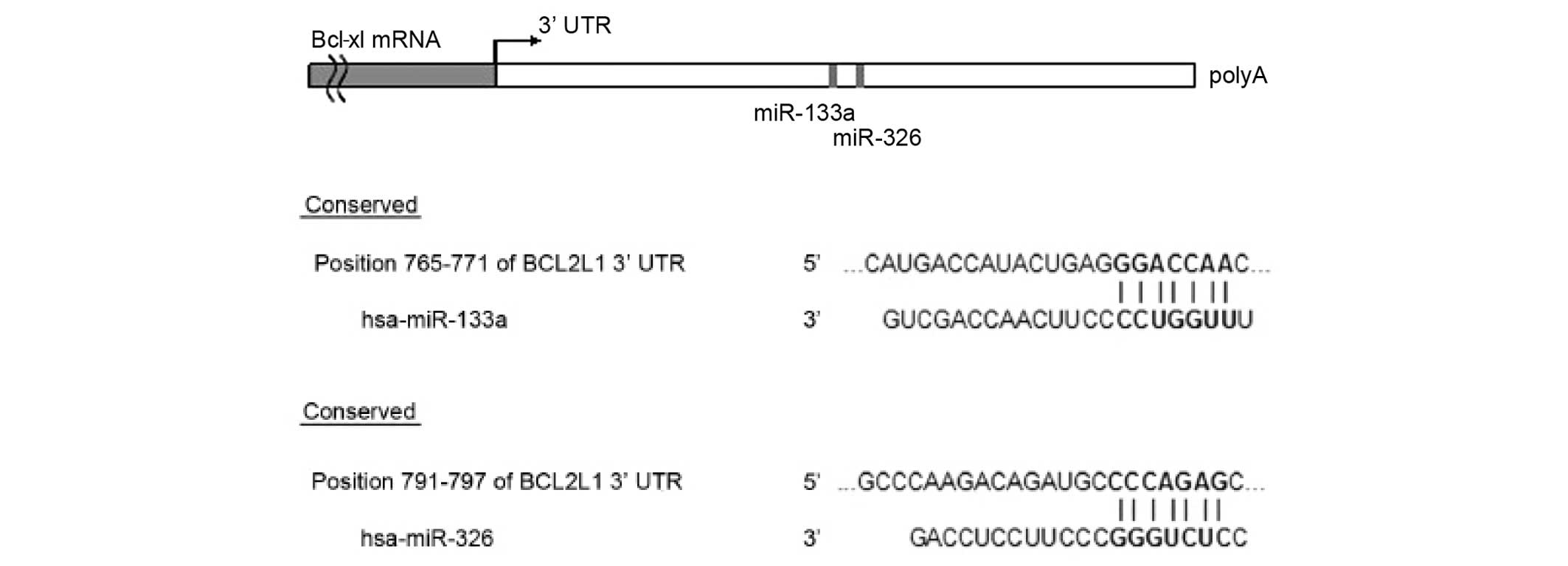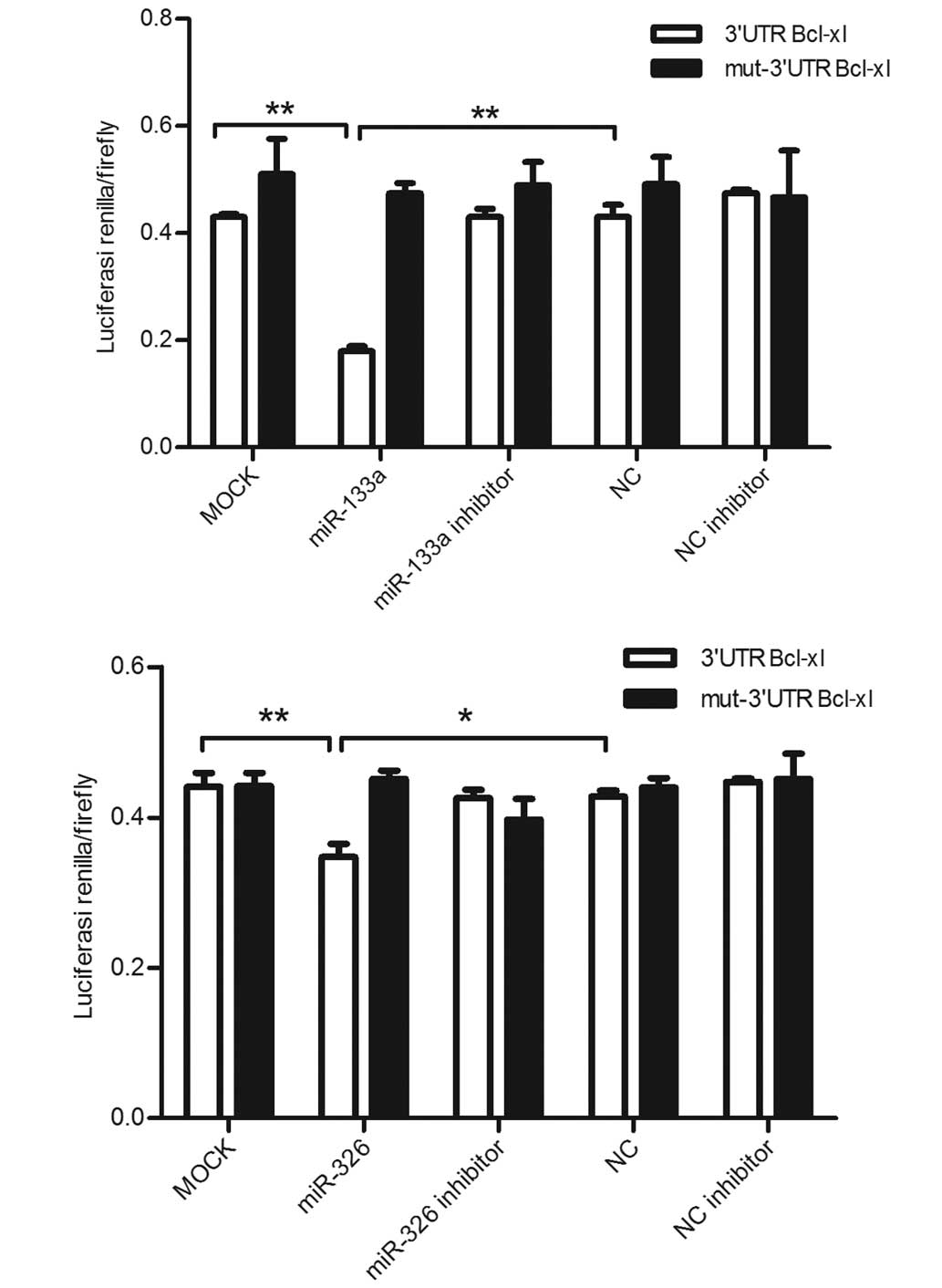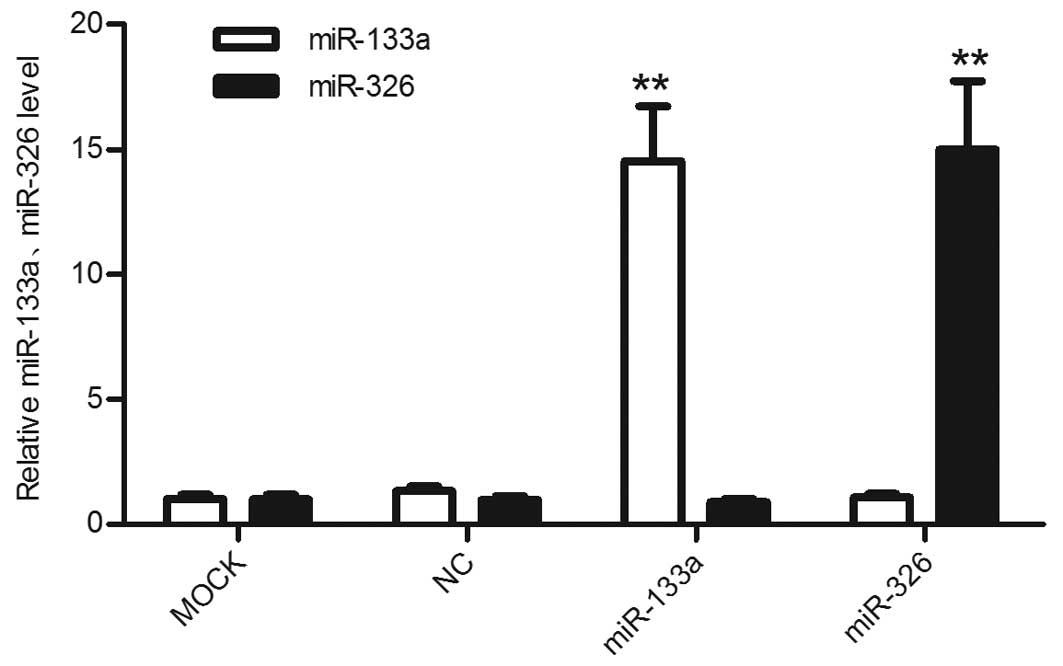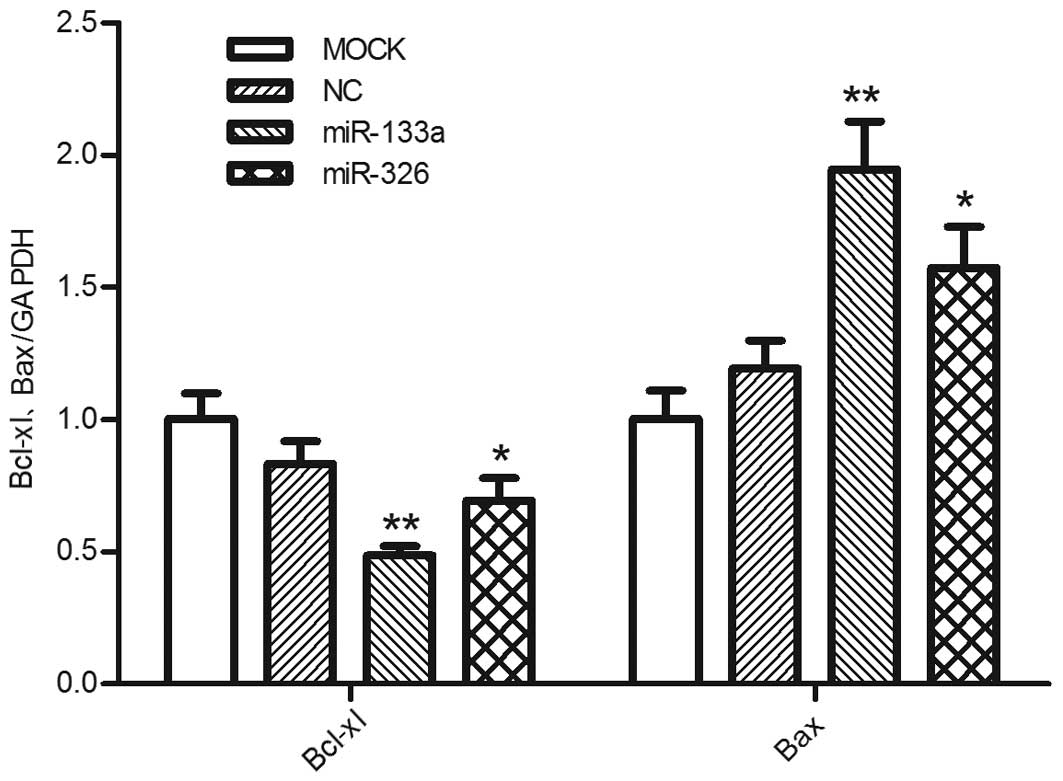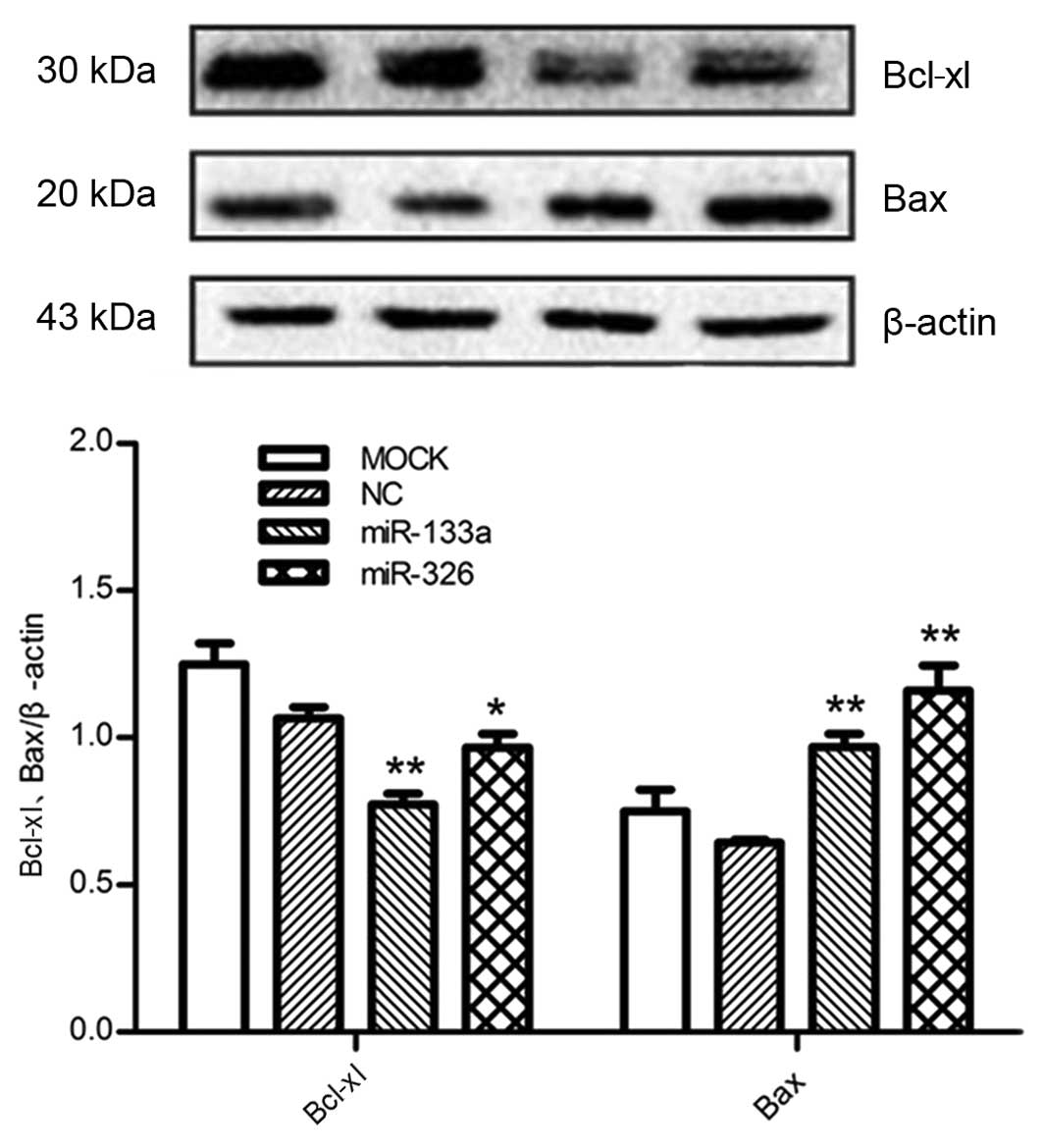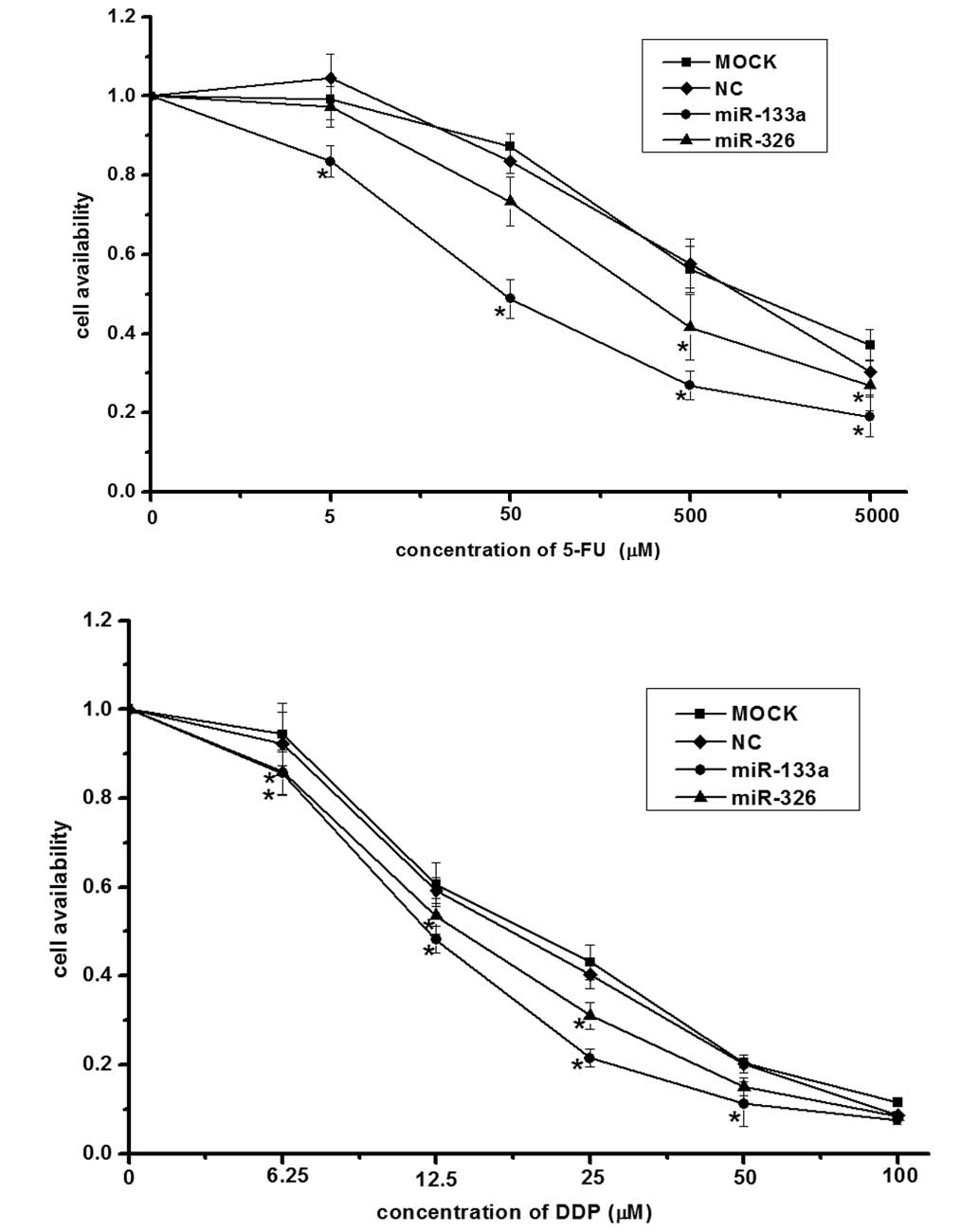|
1
|
Witko-Sarsat V: Apoptosis, cell death and
inflammation. J Innate Immun. 2:201–203. 2010. View Article : Google Scholar : PubMed/NCBI
|
|
2
|
Ghatage DD, Gosavi SR, Ganvir SM and
Hazarey VK: Apoptosis: Molecular mechanism. J Orofac Sci.
4:103–107. 2012. View Article : Google Scholar
|
|
3
|
Schultz DR and Harrington WJ Jr:
Apoptosis: Programmed cell death at a molecular level. Semin
Arthritis Rheum. 32:345–369. 2003. View Article : Google Scholar : PubMed/NCBI
|
|
4
|
Zinkel S, Gross A and Yang E: BCL2 family
in DNA damage and cell cycle control. Cell Death Differ.
13:1351–1359. 2006. View Article : Google Scholar : PubMed/NCBI
|
|
5
|
Danial NN and Korsmeyer SJ: Cell death:
critical control points. Cell. 116:205–219. 2004. View Article : Google Scholar : PubMed/NCBI
|
|
6
|
Petros AM, Olejniczak ET and Fesik SW:
Structural biology of the Bcl-2 family of proteins. Biochim Biophys
Acta. 1644:83–94. 2004. View Article : Google Scholar : PubMed/NCBI
|
|
7
|
Lynam-Lennon N, Maher SG and Reynolds JV:
The roles of microRNA in cancer and apoptosis. Biol Rev Camb Philos
Soc. 84:55–71. 2009. View Article : Google Scholar
|
|
8
|
Chen G, Umelo IA, Lv S, et al: miR-146a
inhibits cell growth, cell migration and induces apoptosis in
non-small cell lung cancer cells. PLoS One. 8:e603172013.
View Article : Google Scholar : PubMed/NCBI
|
|
9
|
Di Leva G, Garofalo M and Croce CM:
MicroRNAs in Cancer. Annu Rev Pathol. 9:287–314. 2014. View Article : Google Scholar :
|
|
10
|
Bartel DP: MicroRNAs: genomics,
biogenesis, mechanism and function. Cell. 116:281–297. 2004.
View Article : Google Scholar : PubMed/NCBI
|
|
11
|
Farazi TA, Hoell JI, Morozov P and Tuschl
T: MicroRNAs in human cancer. Adv Exp Med Biol. 774:1–20. 2013.
View Article : Google Scholar : PubMed/NCBI
|
|
12
|
Xu J, Zhu X, Wu L, et al: MicroRNA-122
suppresses cell proliferation and induces cell apoptosis in
hepatocellular carcinoma by directly targeting Wnt/β-catenin
pathway. Liver Int. 32:752–760. 2012. View Article : Google Scholar : PubMed/NCBI
|
|
13
|
Huang X, Huang F, Yang D, et al:
Expression of microRNA-122 contributes to apoptosis in H9C2
myocytes. J Cell Mol Med. 16:2637–2646. 2012. View Article : Google Scholar : PubMed/NCBI
|
|
14
|
Tang Y, Zheng J, Sun Y, et al: MicroRNA-1
regulates cardiomyocyte apoptosis by targeting Bcl-2. Int Heart J.
50:377–387. 2009. View Article : Google Scholar : PubMed/NCBI
|
|
15
|
Xiong Y, Fang JH, Yun JP, et al: Effects
of microRNA-29 on apoptosis, tumorigenicity and prognosis of
hepatocellular carcinoma. Hepatology. 51:836–845. 2010.
|
|
16
|
Zhao A, Zeng Q, Xie X, et al:
MicroRNA-125b induces cancer cell apoptosis through suppression of
Bcl-2 expression. J Genet Genomics. 39:29–35. 2012. View Article : Google Scholar : PubMed/NCBI
|
|
17
|
Jia HY, Wang YX, Yan WT, et al:
MicroRNA-125b Functions as a Tumor Suppressor in Hepatocellular
Carcinoma Cells. Int J Mol Sci. 13:8762–8774. 2012. View Article : Google Scholar : PubMed/NCBI
|
|
18
|
Lin CJ, Gong HY, Tseng HC, et al: miR-122
targets an anti-apoptotic gene, Bcl-w, in human hepatocellular
carcinoma cell lines. Biochem Biophys Res Commun. 375:315–320.
2008. View Article : Google Scholar : PubMed/NCBI
|
|
19
|
Kontos CK, Christodoulou MI and Scorilas
A: Apoptosis-related BCL2-Family members: Key players in
chemotherapy. Anticancer Agents Med Chem. 14:353–374. 2014.
View Article : Google Scholar
|
|
20
|
Qiu T, Zhou L, Wang T, et al: miR-503
regulates the resistance of non-small cell lung cancer cells to
cisplatin by targeting Bcl-2. Int J Mol Med. 32:593–598.
2013.PubMed/NCBI
|
|
21
|
Yang X, Yin J, Yu J, et al: miRNA-195
sensitizes human hepatocellular carcinoma cells to 5-FU by
targeting BCL-w. Oncol Rep. 27:250–257. 2012.
|
|
22
|
Qin B, Xiao B, Liang D, et al: MicroRNA
let-7c inhibits Bcl-xl expression and regulates ox-LDL-induced
endothelial apoptosis. BMB Rep. 45:464–469. 2012. View Article : Google Scholar : PubMed/NCBI
|
|
23
|
Guo R, Wang Y, Shi WY, et al: MicroRNA
miR-491–5p targeting both TP53 and Bcl-XL induces cell apoptosis in
SW1990 pancreatic cancer cells through mitochondria-mediated
pathway. Molecules. 17:14733–14747. 2012. View Article : Google Scholar : PubMed/NCBI
|
|
24
|
Ling HY, Ou HS, Feng SD, et al: CHANGES IN
microRNA (miR) profile and effects of miR-320 in insulin-resistant
3T3-L1 adipocytes. Clin Exp Pharmacol Physiol. 36:e32–39. 2009.
View Article : Google Scholar : PubMed/NCBI
|
|
25
|
Livak KJ and Schmittgen TD: Analysis of
relative gene expression data using real-time quantitative PCR and
the 2 (−ΔΔCT) Method. Methods. 25:402–408.
2001. View Article : Google Scholar
|
|
26
|
Lewis BP, Burge CB and Bartel DP:
Conserved seed pairing, often flanked by adenosines, indicates that
thousands of human genes are microRNA targets. Cell. 120:15–20.
2005. View Article : Google Scholar : PubMed/NCBI
|
|
27
|
Khatri R and Subramanian S: MicroRNA-135b
and Its circuitry networks as potential therapeutic targets in
colon cancer. Front Oncol. 3:2682013. View Article : Google Scholar : PubMed/NCBI
|
|
28
|
Nian W, Ao X, Wu Y, et al: miR-223
functions as a potent tumor suppressor of the Lewis lung carcinoma
cell line by targeting insulin-like growth factor-1 receptor and
cyclin-dependent kinase 2. Oncol Lett. 6:359–366. 2013.PubMed/NCBI
|
|
29
|
Georgantas RW, Streicher K, Zhu W, et al:
MicroRNA oncogenes and tumor suppressors controlling malignant
melanoma cell growth, apoptosis, migration, and invasion. J Clin
Oncol. 29:85492011.
|
|
30
|
Wang XF, Shi ZM, Wang XR, et al: MiR-181d
acts as a tumor suppressor in glioma by targeting K-ras and Bcl-2.
J Cancer Res Clin Oncol. 138:573–584. 2012. View Article : Google Scholar
|
|
31
|
Hanahan D and Weinberg RA: Hallmarks of
cancer: the next generation. Cell. 144:646–674. 2011. View Article : Google Scholar : PubMed/NCBI
|
|
32
|
Ji F, Zhang H, Wang Y, et al:
MicroRNA-133a, downregulated in osteosarcoma, suppresses
proliferation and promotes apoptosis by targeting Bcl-xl and Mcl-1.
Bone. 56:220–226. 2013. View Article : Google Scholar : PubMed/NCBI
|
|
33
|
Zhou J, Xu T, Yan Y, et al: MicroRNA-326
functions as a tumor suppressor in glioma by targeting the Nin one
binding protein (NOB1). PLoS One. 8:e684692013. View Article : Google Scholar : PubMed/NCBI
|
|
34
|
Liang Z, Wu H, Xia J, et al: Involvement
of miR-326 in chemotherapy resistance of breast cancer through
modulating expression of multidrug resistance-associated protein 1.
Biochem Pharmacol. 79:817–824. 2010. View Article : Google Scholar :
|



